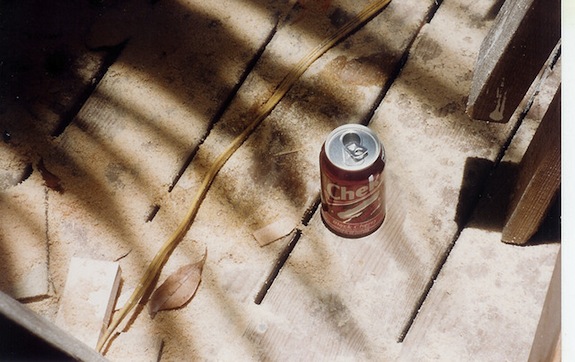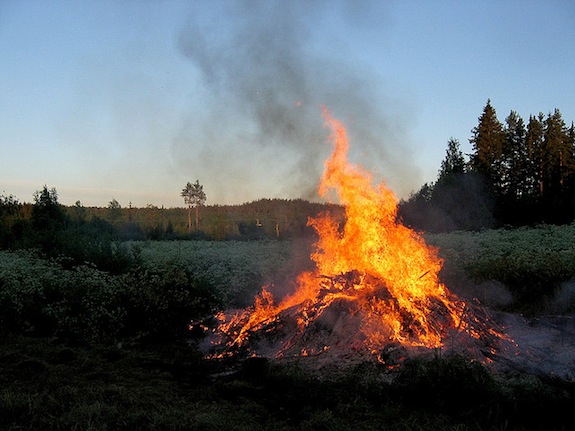On the Solstice, People in the Tropics Cast No Shadow
Today, on the summer solstice, the longest day of the year, the planet tilts the furthest towards the sun. At noon on the Tropic of Cancer, 23° 26′ North, the sun will be at a 90 degree angle from the Earth—directly overhead. Like the can in the picture above, nothing standing on the ground there will cast a shadow. (Ok, the can has a teeny tiny shadow — it was standing a few dozen miles north of the Tropic of Cancer on a previous solstice, according to the photographer. But you get the idea.)
A Greek named Erasthothanes noticed this phenomenon in 250 BCE at Aswan, Egypt. He’d previously measured the length of his small solstice shadow in Alexandria, and he used those data points—the length of his shadow at Alexandria, the length (0) of his shadow at Aswan, and the distance between the two—to calculate both the diameter of the Earth and the tilt of the planet’s axis.
In America, the solstice is said to mark the beginning of summer, but in much of the Northern Hemisphere, it’s Midsummer that will be celebrated today (or thereabouts — not everyone’s so picky about having a raucous midsummer celebration on the actual solstice, especially if, as this year, it falls not only mid-summer, but mid-week). There are plenty of ways to celebrate the solstice, but my favorite’s the Northern European and Scandinavian way — build up a giganto bonfire and let it burn.
More from Smithsonian.com: Return of the Sun Cult
/https://tf-cmsv2-smithsonianmag-media.s3.amazonaws.com/accounts/headshot/Sarah-Laskow-240.jpg)


/https://tf-cmsv2-smithsonianmag-media.s3.amazonaws.com/accounts/headshot/Sarah-Laskow-240.jpg)